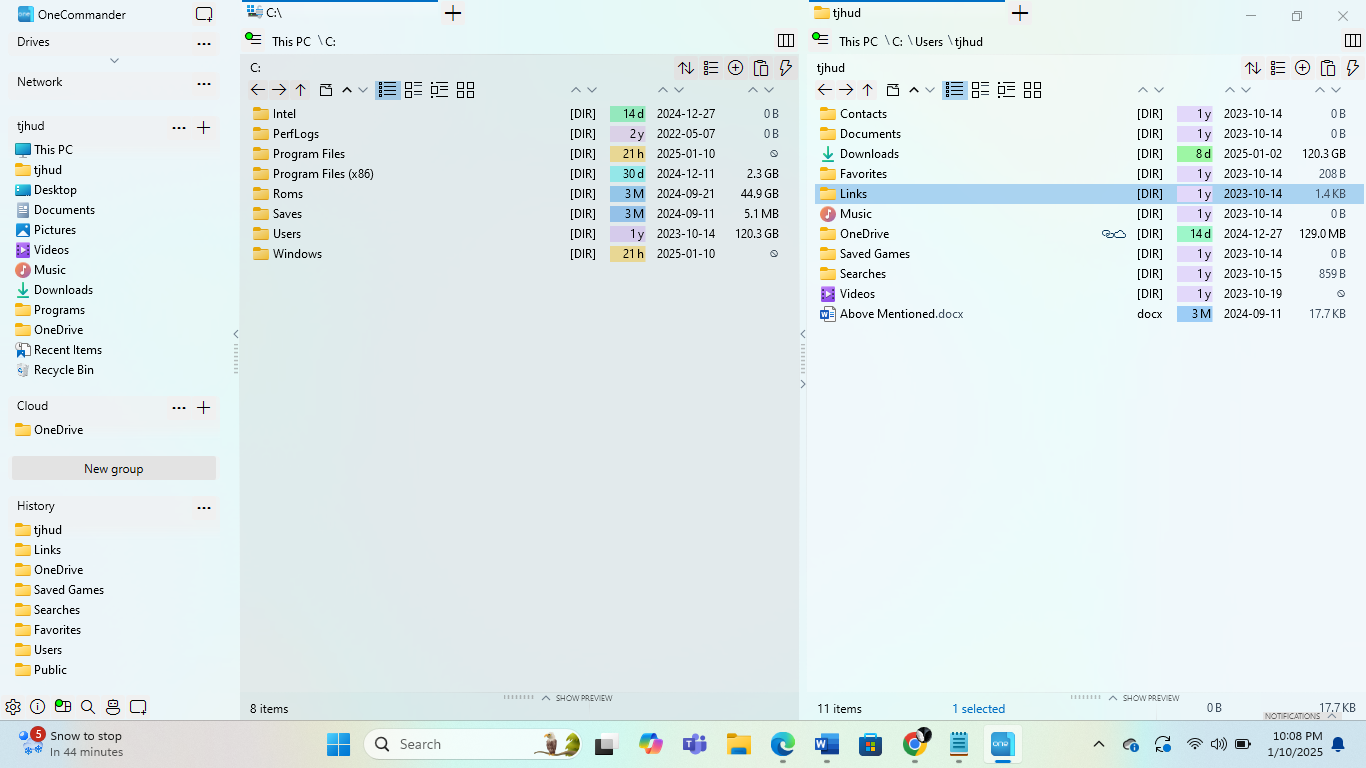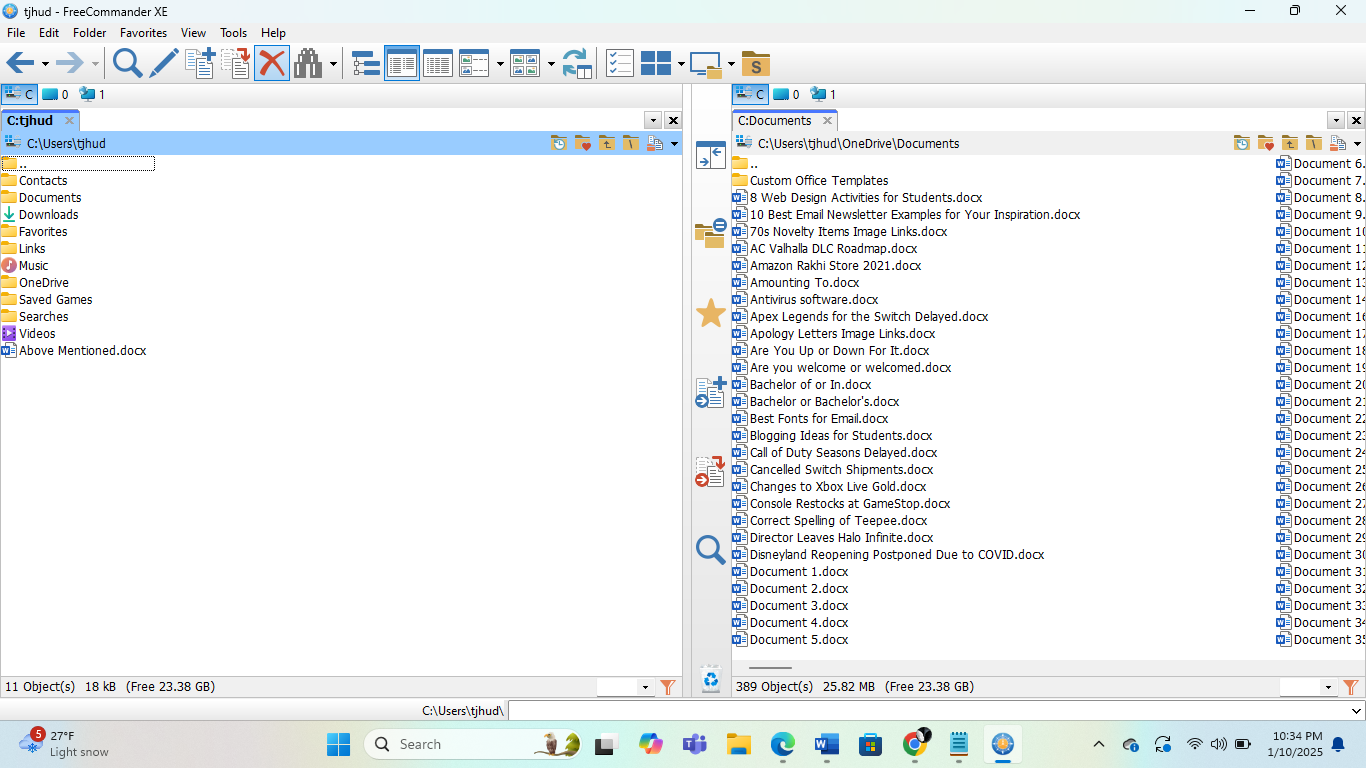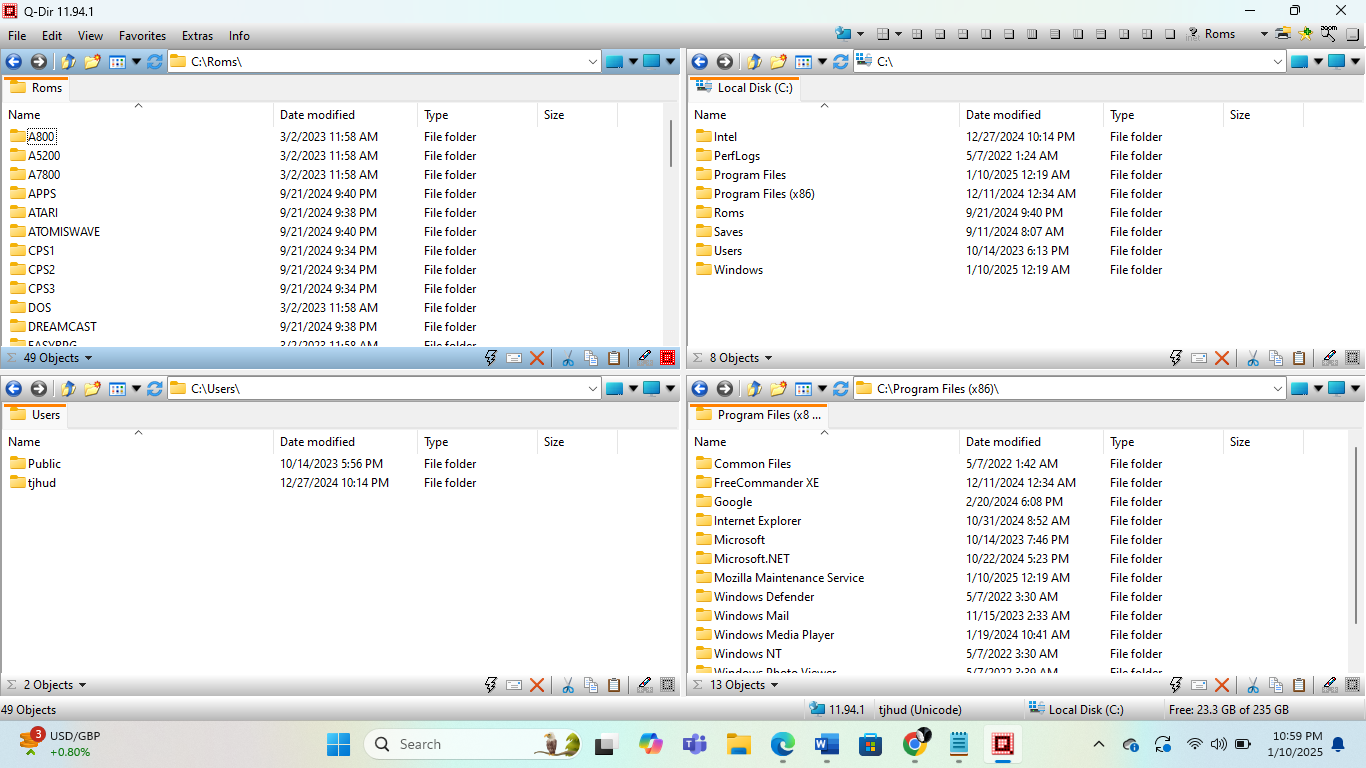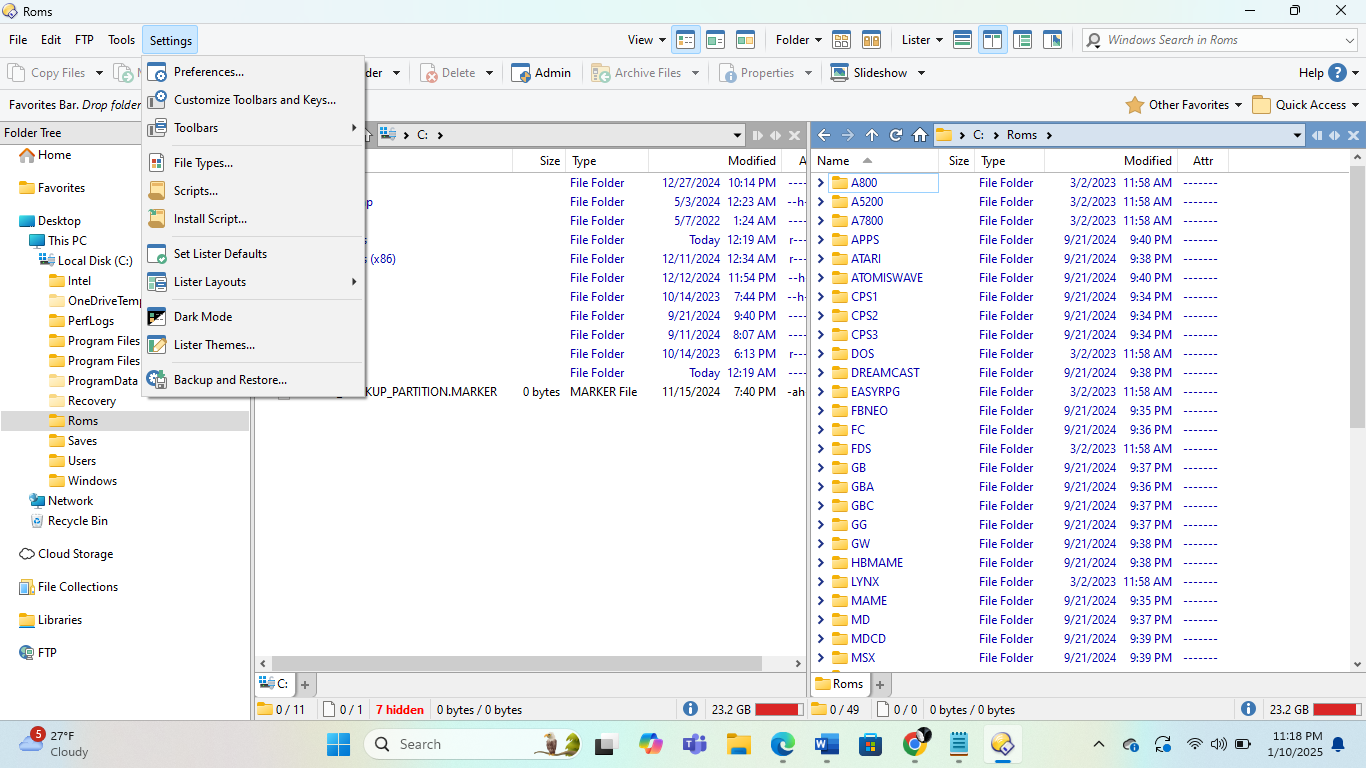The default Windows File Explorer is a perfectly acceptable tool that does its job well enough. But if you’ve ever felt like it was lacking in features or versatility, you might want to take a look at some alternative file management apps.
Why Replace Windows File Explorer?
File Explorer is more than enough for most users. Unless you’re a power user who’s trying to maximize efficiency, there’s no reason to replace the default explorer. If you’ve never felt like File Explorer wasn’t enough, stick with it. If it’s missing features you need, then these options might work for you.
I’ve personally tested each of these programs extensively and run them through VirusTotal.
1
OneCommander
|
Pros |
Cons |
|---|---|
|
Completely free for home use |
Can feel overwhelming at first |
|
You can have two panes open at the same time |
Commercial use requires license |
|
Long Unicode path support |
Occasionally sluggish, but not often |
|
Built-in file preview |
OneCommander is a free Windows file manager that’s been a crowd favorite for many years. It has a customizable dual-pane setup that offers both multi-column and double-window views.
OneCommander offers very similar functionality to Windows File Explorer, with the main difference being the ability to have two panes open at the same time, which gives you more flexibility. For example, you can have the same folder open in two different windows and can interact with them both.
OneCommander opens all files with their respective apps, shows file previews, connects to OneDrive, supports drag and drop, and allows right-click file operations. The program does take a bit of getting used to, especially since you won’t know what some icons mean at first, but doing the things you’re used to with the default Windows File Explorer is pretty intuitive.
That said, OneCommander doesn’t replace the default Windows explorer. So if you try it out and don’t really like it, you can always go back—and perhaps customize File Explorer instead.
2
FreeCommander
|
Pros |
Cons |
|---|---|
|
Intuitive and easy to learn |
Only 32-bit version is free |
|
You can have two panes open at the same time |
Few visual customization options |
|
Create shortcuts with file containers |
UI slightly dated |
|
Includes DOS command line |
FreeCommander is similar to OneCommander in the sense that it is a two-pane file manager. It allows you to interact with different sections of your files simultaneously, drag and drop things easily, set folders as favorites that open automatically, and more.
A big difference between it and OneCommander is that FreeCommander is a bit easier to learn. It has big, obvious icons that usually do what it looks like they would do, and if you aren’t certain, just hovering over those icons for a second tells you their function. On the other hand, you can’t customize its aesthetics as much as OneCommander.
FreeCommander does let you do a couple of other interesting things as well. For instance, you can set up file containers and drag any item from your PC into them. It doesn’t move the files there, but it does create shortcuts for them. Basically, you can use the file container as a sort of hub for shortcuts to access files from anywhere on your computer. You can actually do this with the default Windows explorer too, albeit not quite as quickly and easily.
It’s unfortunate that you can’t visually customize the program as much as OneCommander, as the UI is a little dated. But the real downside of FreeCommander is that only the 32-bit version of the program is free. This means you won’t be able to use it on Windows 11 (which doesn’t have a 32-bit version) unless you pay.
3
Q-DIr
|
Pros |
Cons |
|---|---|
|
Up to four panes open at once |
Small icons on high-resolution screens |
|
Built-in magnification capability |
Not as many keyboard shortcuts as other options |
|
Completely free |
Outdated UI |
|
Very intuitive and simple |
If there’s one thing I don’t like about Q-DIr, it’s just how dated the UI looks. Looks can be deceiving, however, as Q-DIr brings a lot to the table—not the least of which is the four-pane setup it offers, which is quite unique among these file managers.
That might seem like overkill, but having four interactable panes can really take your file operations to another level of efficiency. This is especially true since Q-DIr keeps things pretty lean and simple, so you don’t get too overwhelmed.
Q-DIr is free, and thus doesn’t offer all the same luxuries as a program you might pay for, but it does offer tabbed browsing, bookmarks, adjustable color filters, drag-and-drop operations, full Unicode support, and a few other nice things. The navigation icons are pretty small on high-resolution screens, but there’s a built-in magnifier tool in the program to combat this.
It also has some neat sound effects, which was a surprise. Whether you count these sound effects as a bonus or a nuisance comes down to you, but mute is always an option.
4
Directory Opus
|
Pros |
Cons |
|---|---|
|
Very fast thanks to multi-threading |
No free version, though there are free trials |
|
Almost completely customizable |
More difficult to learn than some other options |
|
Queue operations |
|
|
Doubles as an FTP client |
Directory Opus is the only file management program on this list that doesn’t have any sort of free version (though it has a thirty day trial). Personally, I’m not so unhappy with my default file manager that I’m willing to pay for a replacement, but Directory Opus at least offers a lot for its price tag.
One of the most notable is that, unlike a lot of other file managers, Directory Opus does completely replace the default Windows File Explorer if you want it to.
You can also set Directory Opus to run whenever your PC starts up, and it’s a two-pane setup. The icon-focused interface is a little crowded, but unlike a lot of the competition, you can trim down this program as much as you want to suit your needs. Almost every aspect of Directory Opus is customizable.
Directory Opus further sets itself apart with its extreme speed, facilitated by multi-threading. Unlike the other options on this list, you can even queue up several operations to take place sequentially. Plus, there’s more to this program than mere file management. It can also compress files, offers metadata editing, can save search terms as macros, and even functions as an FTP client.
Ultimately, you get a lot more from Directory Opus compared to the free options, but if you don’t need all the bells and whistles, the free options will serve you well too.
These are just some of the alternative file management programs that you can download to replace Windows File Explorer. If you decide to go hunting for another option, just make sure that whatever you download is safe, especially for programs that deal with your files. There are ways to check files and links for safety before interacting with them.








